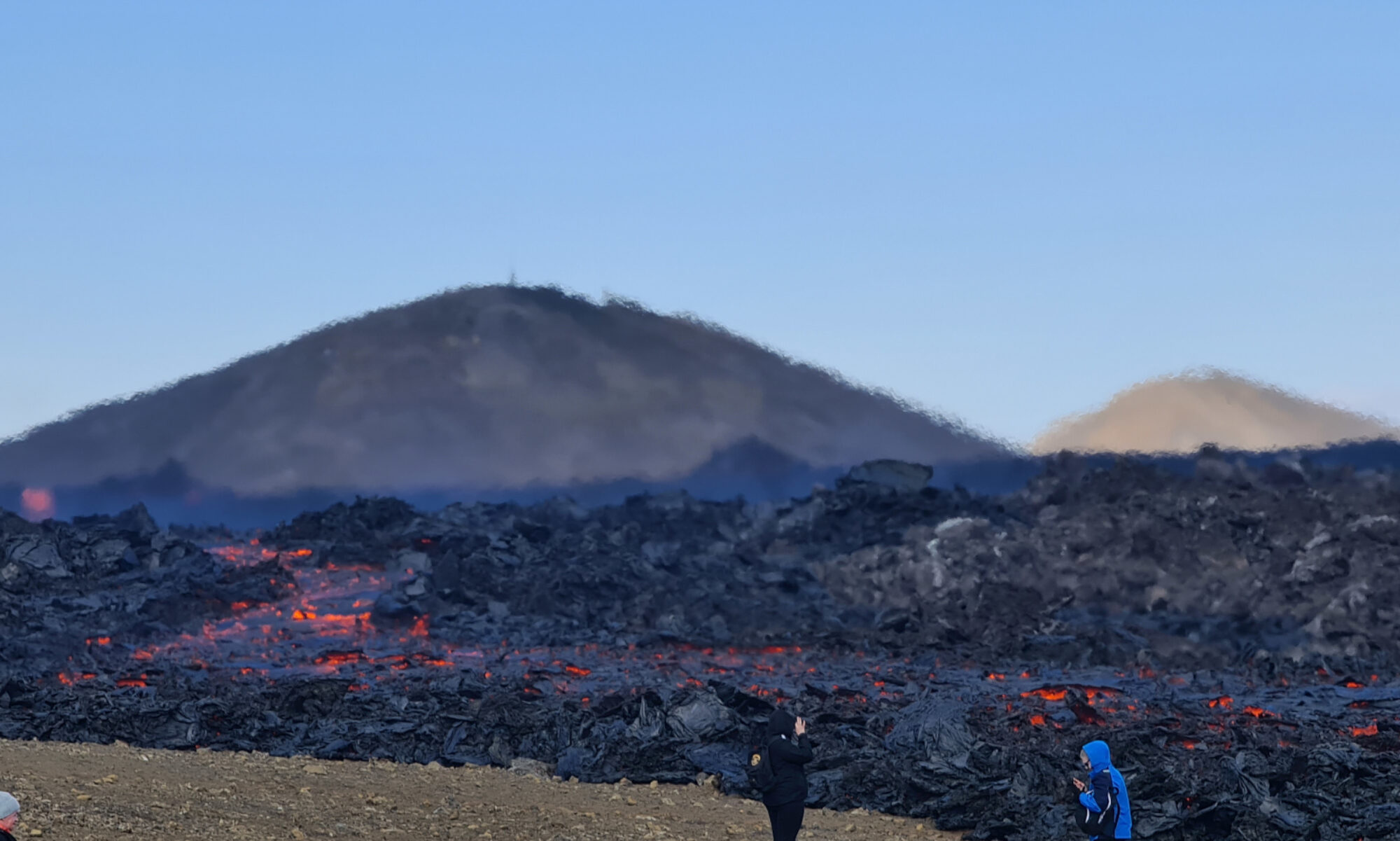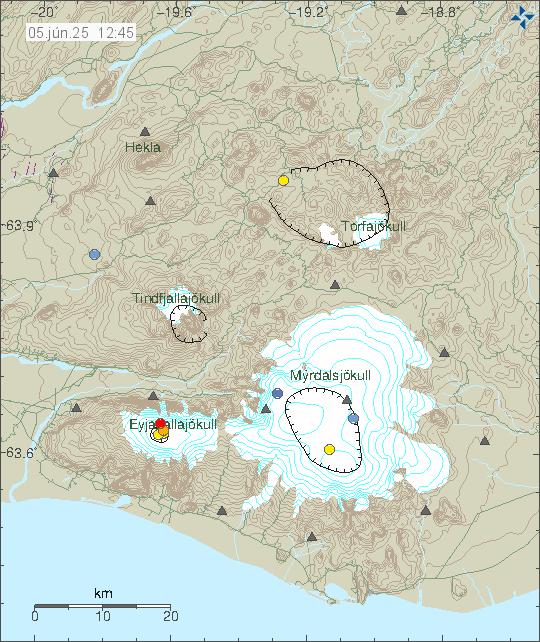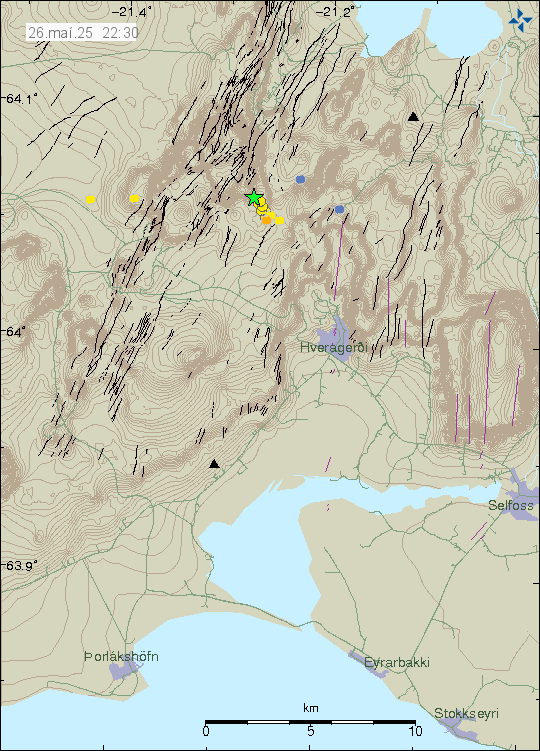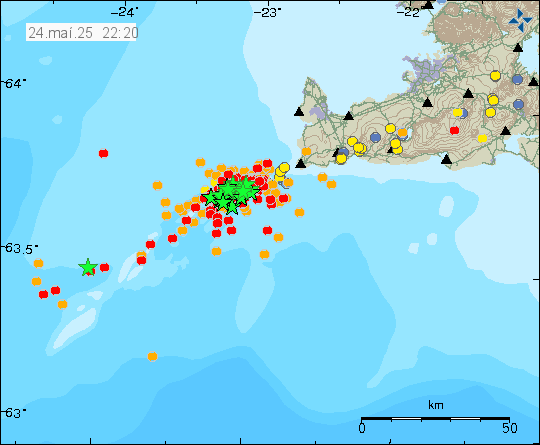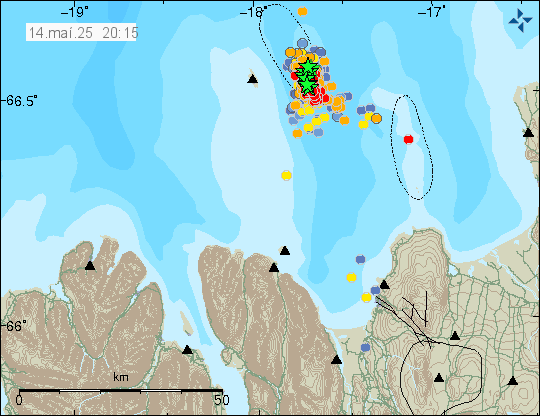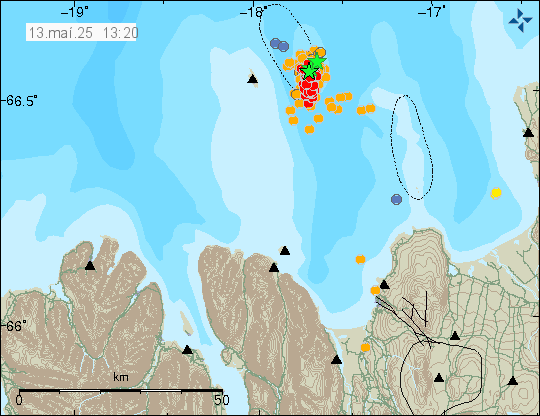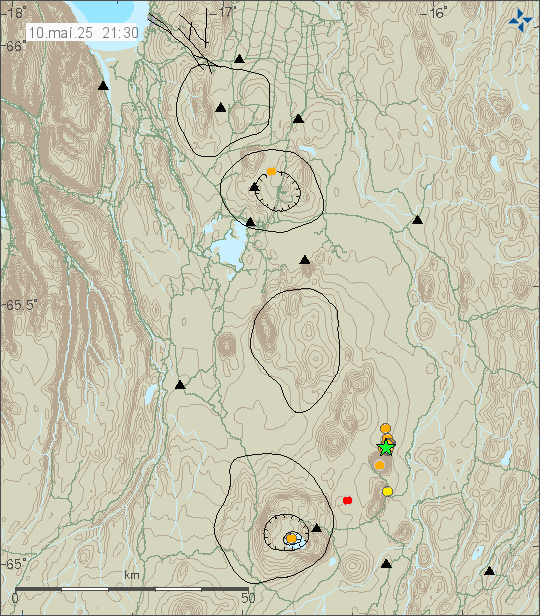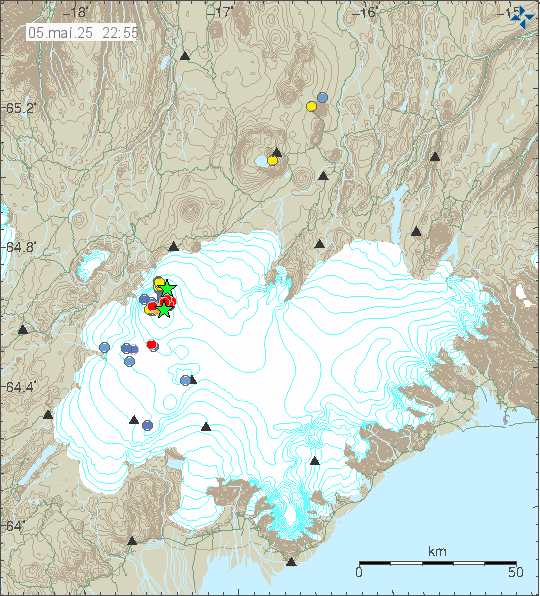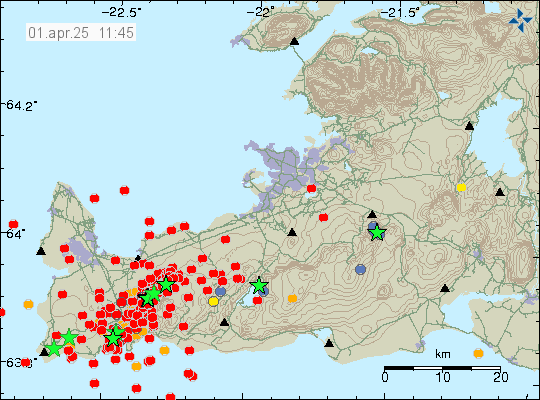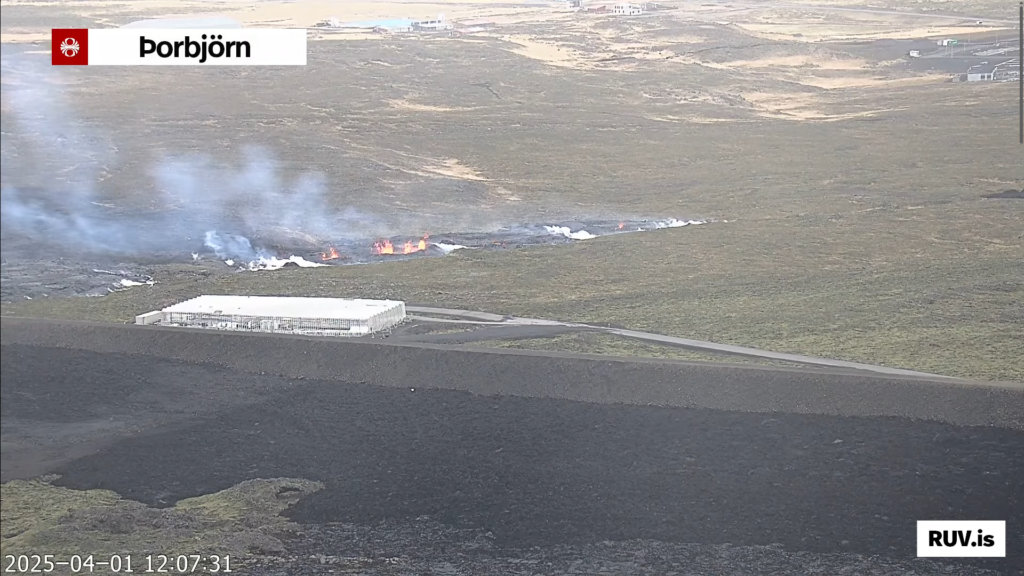Yesterday (16-June 2025) at 18:05 UTC an earthquake with magnitude of Mw3,7 took place in Ljósufjöll volcano system at the depth of 18 km. It was felt in nearby area that does not have any dense population.
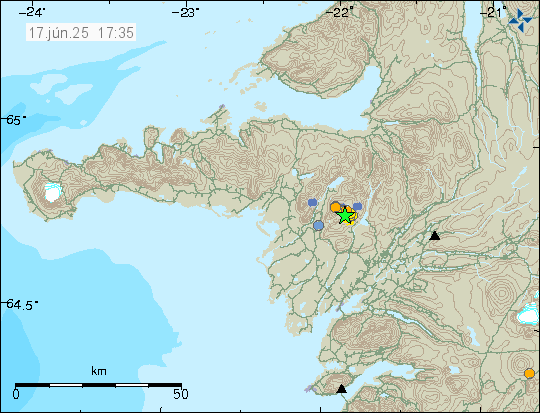
This earthquake activity continues to happen because of magma inflow into the crust at this location. Since the inflow of magma started at this location, the magma has not moved up into the crust that can be noticed. Resulting in pressure building up at the lower end of the crust in this part of Iceland. The crust in this area is not giving into the pressure from the magma easily and this crust is also old, dense and brittle. Making it much more difficult for any magma to move to the surface.
